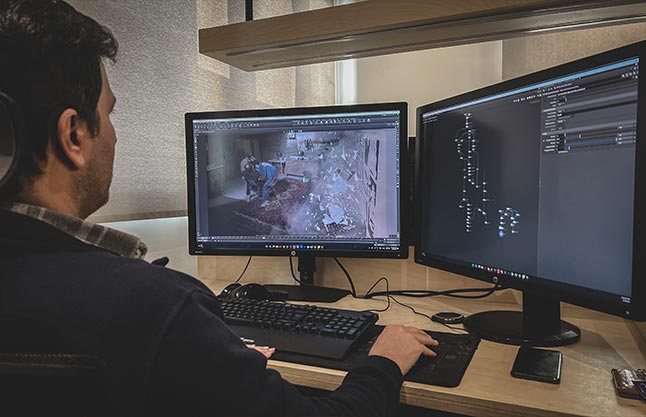



Step back in time with our latest film project, "Pressure Cooker," set against the backdrop of the 1980s during the Iran-Iraq war. With meticulous attention to detail, our visual effects team is reconstructing historical spaces, immersing audiences in the past like never before.
Visual effects are pivotal in bringing authenticity to the screen, creating lifelike imagery that transports viewers to the heart of the action. From explosive moments to intricate effects, every detail is crafted to perfection, offering a glimpse into the impact of historical events on both objects and characters.
After nearly three months of dedicated design and execution, we're thrilled to announce that "Pressure Cooker" is nearing completion and set for release around Nowrouz.
Stay tuned for an unforgettable cinematic experience!"
Reed More
Over the past few decades, the film industry has undergone a profound transformation, largely driven by the emergence and evolution of Visual Effects (VFX). While VFX has long been part of cinema, the digital revolution in the late 20th century marked a significant turning point, captivating audiences and setting new standards for cinematic spectacle.
VFX has fundamentally altered the way stories are told and experienced, allowing filmmakers to visualize the previously unimaginable. From the expansive landscapes of outer space in "Interstellar" to the intricate realms of Middle-earth in "The Lord of the Rings" trilogy, VFX has made it possible to create immersive worlds integral to storytelling. Moreover, VFX provides cost-effective solutions to practical production challenges, enabling the creation of elaborate environments and sequences in a digital space, thereby reducing costs and logistical complexities.
The impact of VFX on storytelling cannot be overstated. It has expanded the filmmaker's toolbox, offering a wide range of possibilities to enhance narrative dynamics. Whether used subtly to evoke mood and atmosphere or overtly to drive central narrative elements, VFX has become an indispensable storytelling tool. Additionally, the democratization of VFX technology has empowered independent filmmakers to incorporate high-quality visual effects into their work, fostering creativity and innovation in independent cinema.
Looking ahead, the future of VFX appears promising as technology continues to advance. Emerging technologies such as virtual reality, augmented reality, and artificial intelligence are poised to revolutionize the industry further. The integration of these technologies with traditional filmmaking techniques holds the promise of even more immersive and interactive cinematic experiences. As such, VFX will undoubtedly remain a vital component of the film industry, pushing the boundaries of storytelling and cinematic possibilities.
In conclusion, the impact of VFX on the film industry is profound and multifaceted, reshaping the visual language of cinema and expanding the horizons of storytelling. With its ability to visualize the impossible, offer cost-effective solutions, and enhance storytelling dynamics, VFX has become an indispensable aspect of modern filmmaking. As technology continues to evolve, the magic of movies will continue to thrive, fueled by the limitless potential of visual effects.
Reed More